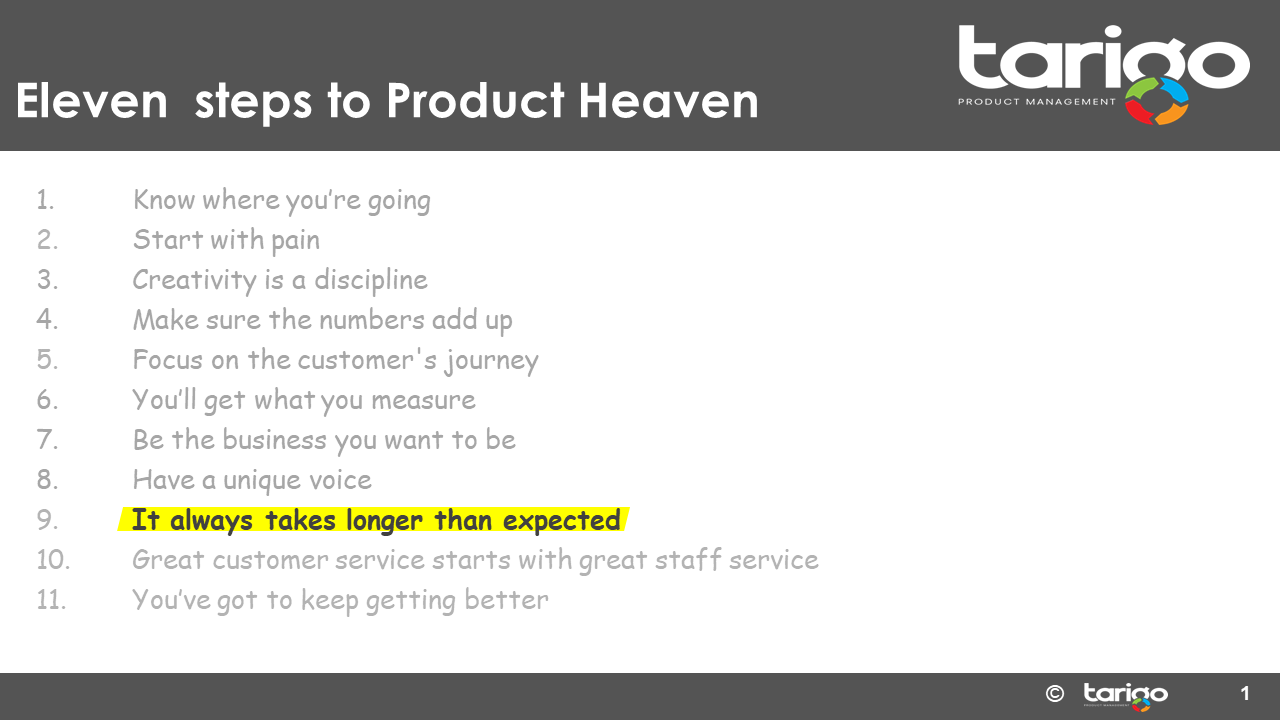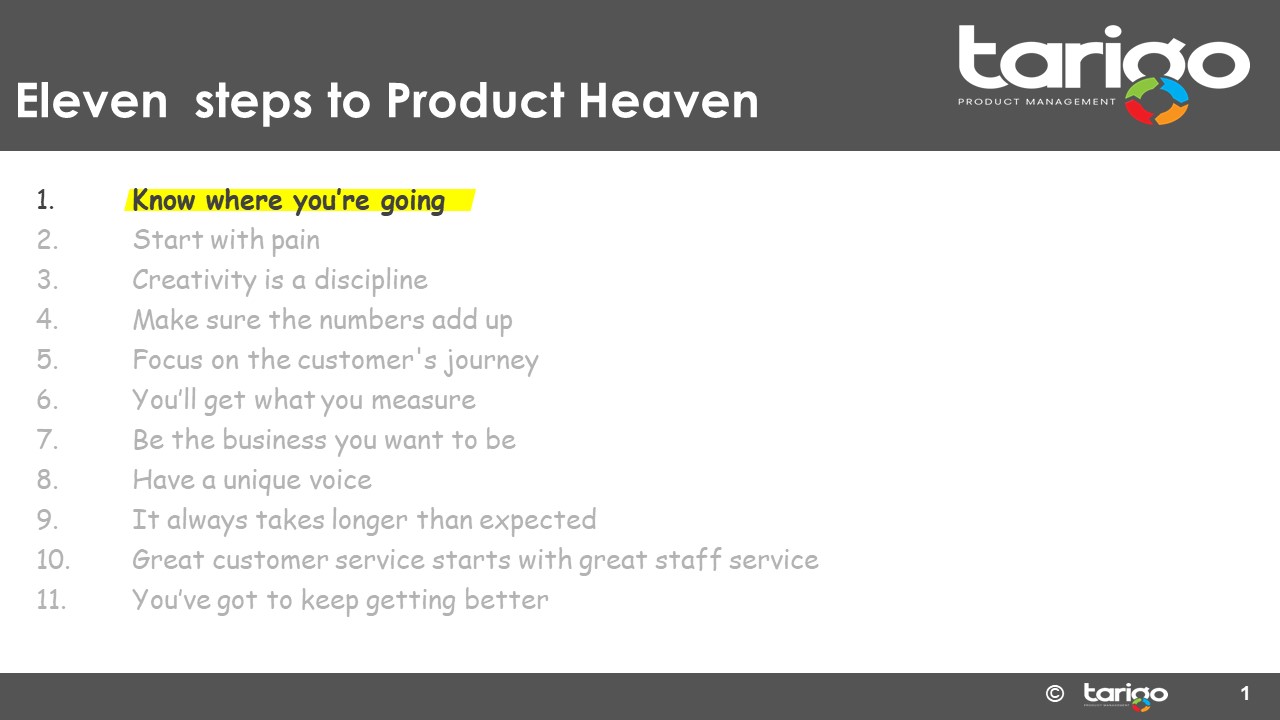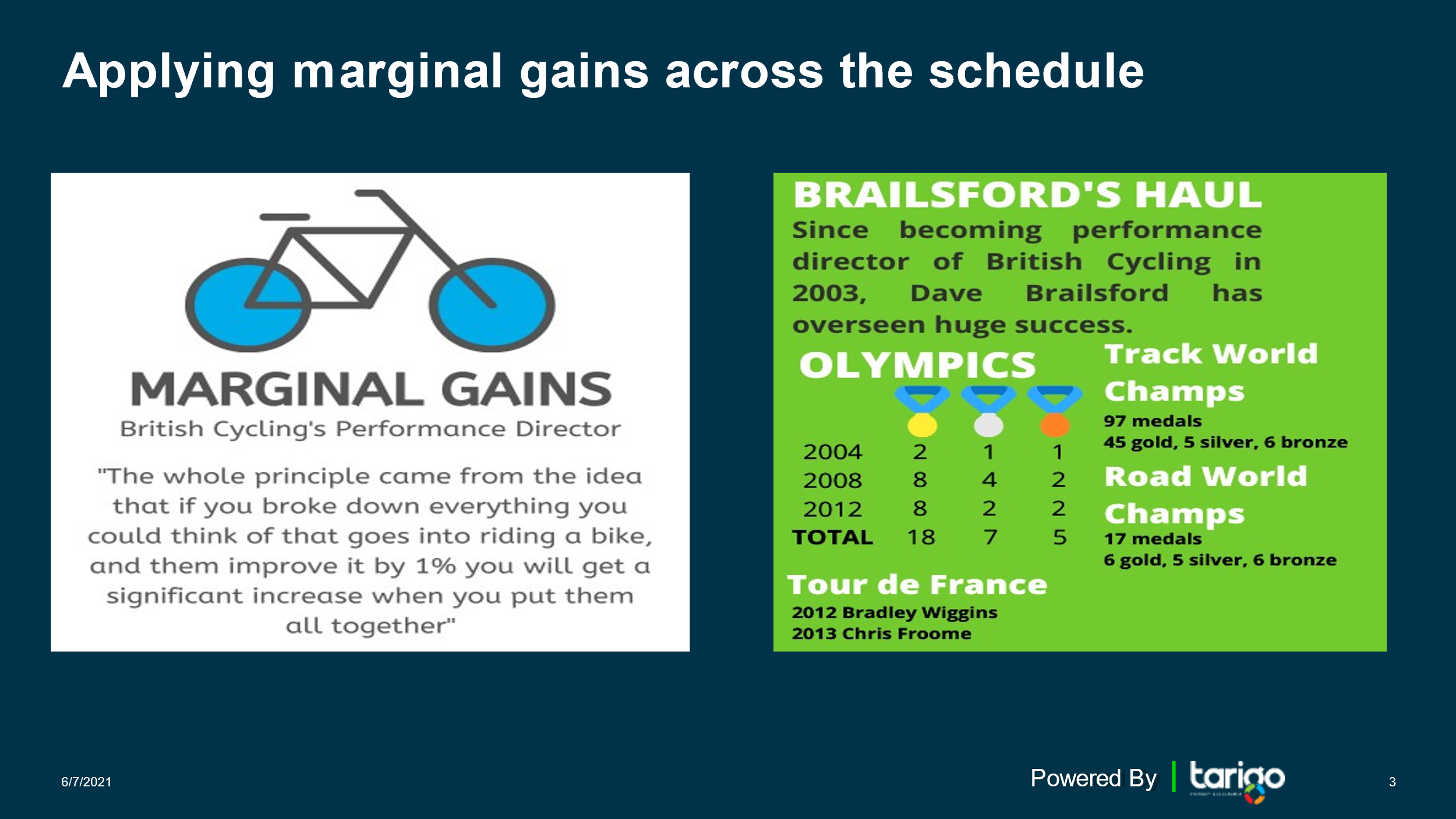Your daily dose of Product Management Goodness
Want to know more?
We would love to hear your questions and suggestions for topics you would like to see covered in our future blog posts, so don't be shy and get in touch!


Product Heaven
What’s the most likely route to Product Heaven? Over the years I’ve consulted and trained product teams across the globe. There have been many lessons along the way. This is my distillation of the steps that are most likely going to lead to product success:
5.Focus on the customer’s journey
Your customers do more than simply ‘use’ your product- they discover it, buy it, unpack it, install it, use it, upgrade it, replace it, etc. In short they are on a journey with your business and your product, a journey that you must make as friction free and engaging as possible. Miss this and you might build a great product, but neglect other aspects to the extent that customers don’t get to the ‘use it’ step. Think about the iPhone – sure it’s a great product but it’s success is driven partly by the greatness of the product and partly by the eco system that surrounds it. From the unboxing experience to the ease of upgrade, Apple thinks about the journey a customer takes with them.
So start with your personas, and step through the complete journey you want them to take. At each step challenge your business “ Could we make that more engaging”, “Could we make it simpler”. The journey needs to be as good as the product.
Want some support? We help teams build out empathy maps, personas, user journeys, and customer buying journeys
read more

Product Heaven
What’s the most likely route to Product Heaven? Over the years I’ve consulted and trained product teams across the globe. There have been many lessons along the way. This is my distillation of the steps that are most likely going to lead to product success:
Make sure the numbers add up
The economics of a product are straightforward – there needs to be enough customers willing to pay a high enough price point so that you can stand up a credible P&L statement. Too often teams get wowed by the tech and forget this simple economic reality. That means that there has to be a Total Available Market (TAM) that’s substantial enough, but more critically, there needs to be a Serviceable Available Market (SAM), that has enough scale to sustain your product. Additionally, those customers need to have enough motivation (i.e. pain created by the problem your product solves) that they’re willing to pay a price point that makes economic sense for your business (a £100 product isn’t an attractive answer to a £10 pain). And don’t forget competition. Without a unique and sustainable point of difference, those price points you’ve built your P&L around can be quickly eroded.
Want some support? We help teams define their product economics with Market Sizing and Product Financials workshops.
read more

Product Heaven
What’s the most likely route to Product Heaven? Over the years I’ve consulted and trained product teams across the globe. There have been many lessons along the way. This is my distillation of the steps that are most likely going to lead to product success:
3. Creativity is a discipline
I’ve worked with people who believe creativity is in the DNA – creative geniuses are born, not nurtured. Whilst I’m sure it’s true that some individuals are more attuned to creativity , it’s the environment that really counts. Teams that score high on the creativity index have two things in common; Time to think creatively, and some form of innovation process to structure that thinking. You might have the next Steve Jobs in your team, but that will count for nothing if their creative sparks are snuffed out because they are doing 12 hour days battling through tactical work – creativity needs some protected time. And even with some time set aside a team is unlikely to suddenly be creative – they need structure. We recommend Design Thinking as a process – start with the customer pain and then look for ways to solve it through the different lenses of ‘How Might We’. It sounds counter-intuitive, but that sparky, free flowing creativity you’re looking for is rooted in structure and disipline.
Want some support? We help teams build their creative muscle with Design Thinking workshops
read more

Product Heaven
What’s the most likely route to Product Heaven? Over the years I’ve consulted and trained product teams across the globe. There have been many lessons along the way. This is my distillation of the steps that are most likely going to lead to product success:
2. Start with Pain
We all want to innovate – find the next big thing that will propel the business forward. Often innovation conversations focus on the product “What new shiny thing can we take to market?”. This is not the right place to start. Especially in the B2B world, great products are built on solving real world customer pain. The bigger the pain, the more motivation the customer has to find a fix for it. Obvious really, but missed by so many teams on their quest to uncover a winning idea. So if you’re looking for the next big thing, start with this question “What pains are keeping our customers awake at night?”. Pains that wake someone at 3am, are pains they’re motivated to solve
Want some support? We help teams find customer pains with workshops on Design thinking and Proto Persona Building
read more

Product Heaven
What’s the most likely route to Product Heaven?
Over the years I’ve consulted and trained product teams across the globe. There have been many lessons along the way. This is my distillation of the steps that are most likely going to lead to product success:
Know where you’re going.
Imagine getting in your car and just driving, You’ll certainly end up somewhere, but the chances of it being somewhere you want to be are pretty slim. It’s no different with product; if you don’t have a clear sense of where you’re trying to get to, then you have no idea whether that new feature, or that market initiative, or that proposed marketing campaign are taking you in the right direction. You’re not travelling, you’re drifting.
Great Product teams always have a vision – where they want to be in five years, why they want to be there, and how they’ll track it. They write it down, share it, review it regularly, and make changes to it when market conditions dictate. The vision connects and inspires the team who are on that journey. Vision is the glue that binds the team together.
Want some support? We help teams achieve this with workshops on Mega trending, Story Telling, and the Vision Canvas Building
read more
Metrics
What metrics are important?
Most product teams use some form of metric suite to track product success. But for many, the metrics they use are ‘lag’ metrics; they focus on sales or profit and are measuring the result rather than tracking progress. The equivalent would be if the military deployed early warning system that only told them when an enemy missile had hit their base.
Metrics are more useful when they’re ‘lead’ focused, giving an early warning that enables you to take action. Things like decreasing usage time, reduction in API calls, or even a reduction in the number of support calls might be lead indicators that help you react before the lag indicator of reduced revenue hits your business.
read more

Setting a Market Price Point
Setting a market price point.
Step 6 of 6 – Constant refinement model
Once in market it’s critical to keep reviewing pricing – markets change, competitors change, customer perception of value can change. We use marginal gain thinking to look for small changes in the product, the price or the position we take in market to deliver maximum customer value and extract maximum commercial value. Constant customer research helps us identify marginal gain opportunities.
read more
Setting a Market Price Point
Step 5 of 6 – Test and adjust the pricing model
Steps 1-4 are great pre-launch work, but once in market you need to assess and adjust your price to maximise the success of your product. A/B testing lets you do this, comparing actual results by presenting your customers with a range of prices to see which one does better. As an example of this is the real world take a look at Amazon ; prices change regularly as they refine pricing to identify the sweet spot.
read more

Setting a Market Price Point
Step 4 of 6 – Define the pricing model
There are a huge variety of pricing models to consider. The pricing model is a fundamental driver of product success.
Many models can be combined into a unique pricing model. Pricing alters throughout the product lifecycle and the pricing model is likely to change to reflect market conditions. Some examples of pricing models are:
Freemium pricing is the practice of offering a basic set of services for free (or a low price point) , and enhanced features and/or content for an additional price.
Psychological pricing is based on the theory that certain prices and offers have a buyer impact. In this method, prices are often expressed as just-below numbers (e.g.£1.99) or increased product volume offers (e.g.2 for 1)
read more
Check out the Archive